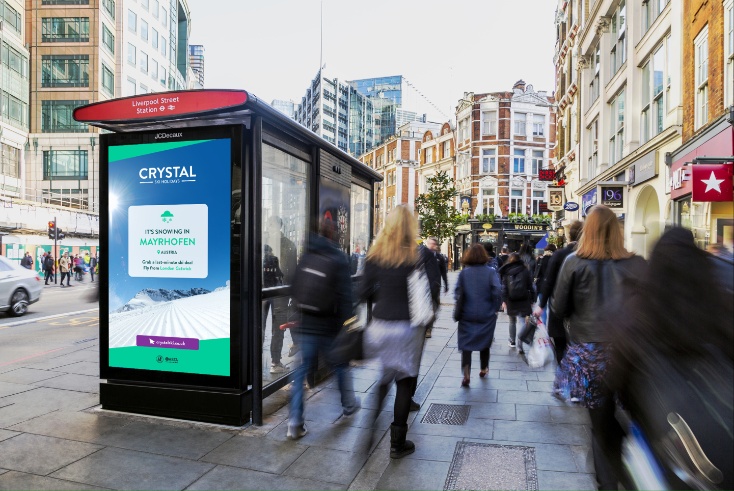Opinion
Dynamic Creative Optimisation will be crucial to programmatic digital out-of-home’s rise in 2024.
It’s funny to say that the big focus for programmatic digital out-of-home (PrDOOH) in 2024 will be on the creative, given that out-of-home (OOH) is a creative-first medium above anything.
However, with PrDOOH technologies and a suite of data capabilities now readily available, we’ll witness creative start to be pushed beyond its traditional barriers.
DCO (Dynamic Creative Optimisation) will be the lynchpin of this drive in 2024.
High-powered telescopes
DCO is becoming increasingly popular with advertisers today and with good reason.
The power to create hyper-personalised ad experiences through real-time data and machine learning algorithms to generate personalised and relevant ad content has revolutionised the way brands connect with their audiences. DCO offers advertisers near endless opportunities to deliver an ad that is precisely relevant for a user.
However, DCO campaigns are only as good as the data behind them.
Think of DCO as a high-powered telescope. Using good data sources makes the picture clear, revealing the perfect ad for each user. Insufficient or lack of data leaves you with blurry lenses. You glimpse possibilities, but never truly find the perfect ad for each user.
2023 saw a proliferation in available technologies and data sources and — coupled with the development of creative management tools within demand-side platforms and the infrastructure readiness of media owners — paves the way for transformative DOOH creative in 2024.
Imagine adaptive ads that respond to live social or event feeds, location-specific promotions, personalised product recommendations, sensor-triggered messages, user-generated content and even augmented reality experiences.
The possibilities are endless which makes DCO truly exciting, and 2024 will be the year we see advertisers truly embrace the power of DCO in PrDOOH.
Increased focus on data-driven targeting and attribution at the campaign level
Data-driven targeting has become increasingly important in recent years.
Advertisers now have access to a wider range of data sources, including first-party data, third-party data, and real-time data, and with advancements in the targeting technologies being developed, specifically AI and machine-learning powered tools, advertisers can now readily identify patterns and make predictions about consumer behaviour.
2024 is poised for a significant advancement. We’ll see advertisers leveraging a wider spectrum of data sources, transcending traditional demographic-based targeting to embrace behavioural insights that drive informed ad placements.
DCO, AI, integration with other marketing channels, real-time data, mobile data, location data, beacon technology, geofencing, IP targeting, and search and social data will be the key driving forces behind this evolution.
We’ll also see the move towards attribution becoming standardised in PrDOOH.
Attribution has always been challenging for any traditional offline channel, particularly traditional OOH advertising, limiting performance-led clients’ exposure to the channel.
However, PrDOOH has been instrumental in establishing a robust attribution framework that goes beyond traditional metrics. By embracing multi-touch attribution, deterministic attribution, cross-channel attribution, real-time attribution, and a broader spectrum of performance indicators, PrDOOH is attracting performance-driven advertisers who seek measurable ROI.
This paradigm shift away from individual-led attribution, is positioning PrDOOH as a powerful tool for data-driven advertising, revolutionising the way brands connect with their audiences and achieve their marketing objectives.
PrDOOH will bridge the gap to omnichannel success
PrDOOH has emerged as a pivotal element in marketers’ omnichannel strategies, seamlessly bridging the gap between physical and digital settings.
In 2023, PrDOOH’s alignment into the omnichannel framework has gained significant traction, as evidenced by VIOOH’s 2023 State of The Nation, which revealed that 71% of UK advertisers intend to prioritise PrDOOH’s tighter integration in their multi-channel campaigns.
The collaboration between technology providers, demand-side platforms (DSPs), media owners, advertisers, and agencies will intensify, driving the creation of a unified and seamless experience for brands, enabling them to effectively plan, execute, and optimise campaigns across multiple channels.
The synergistic convergence of data from PrDOOH and online channels is further enhancing targeting precision and providing a wealth of comprehensive insights. By integrating PrDOOH into their omnichannel strategies, marketers can maximise the impact of their campaigns through a cohesive and strategic approach.
PrDOOH’s ability to seamlessly integrate with existing digital marketing efforts, coupled with its ability to provide granular audience data, makes it a powerful addition to any omnichannel strategy.
As PrDOOH continues to evolve — and its integration with other marketing channels deepens — we can expect to see even more innovative and effective advertising campaigns that transcend the boundaries of traditional marketing approaches.
More energy (green) efficient buying
PrDOOH advertising is taking a greener turn too in 2024. With sustainability and the reduction of carbon emissions becoming paramount for brands, we’ll see a shift in cleaner media buying practices. While many in this space already have sustainability and eco-friendly initiatives, we’re entering an era of increasing environmental consciousness.
While DOOH is already one of the lowest emitters of CO2 when compared to other online media channels, media owners are taking additional steps towards sustainability. For instance, the i-media network has committed to utilising 100% renewable energy by April 2024, demonstrating both a firm and responsible commitment.
Carbon calculators can now empower brands to accurately assess their carbon footprint throughout the entire PrDOOH advertising process, from creative inception to media delivery. This data-driven approach will enable brands to make informed decisions that minimise their environmental impact, and position PrDOOH as a frontrunner in environmentally responsible media campaigns.
Oliver Goodge is head of programmatic at i-media.
Adwanted UK is the trusted delivery partner for three essential services which deliver accountability, standardisation, and audience data for the out-of-home industry.
Playout is Outsmart’s new system to centralise and standardise playout reporting data across all outdoor media owners in the UK.
SPACE is the industry’s comprehensive inventory database delivered through a collaboration between IPAO and Outsmart.
The RouteAPI is a SaaS solution which delivers the ooh industry’s audience data quickly and simply into clients’ systems.
Contact us for more information on SPACE, J-ET, Audiotrack or our data engines.




